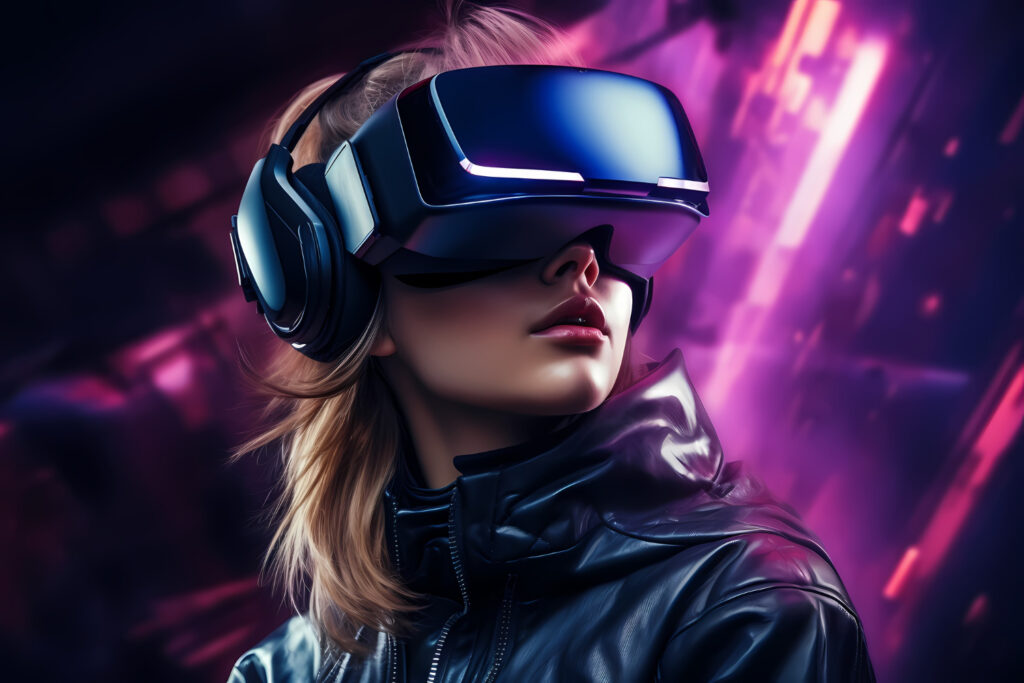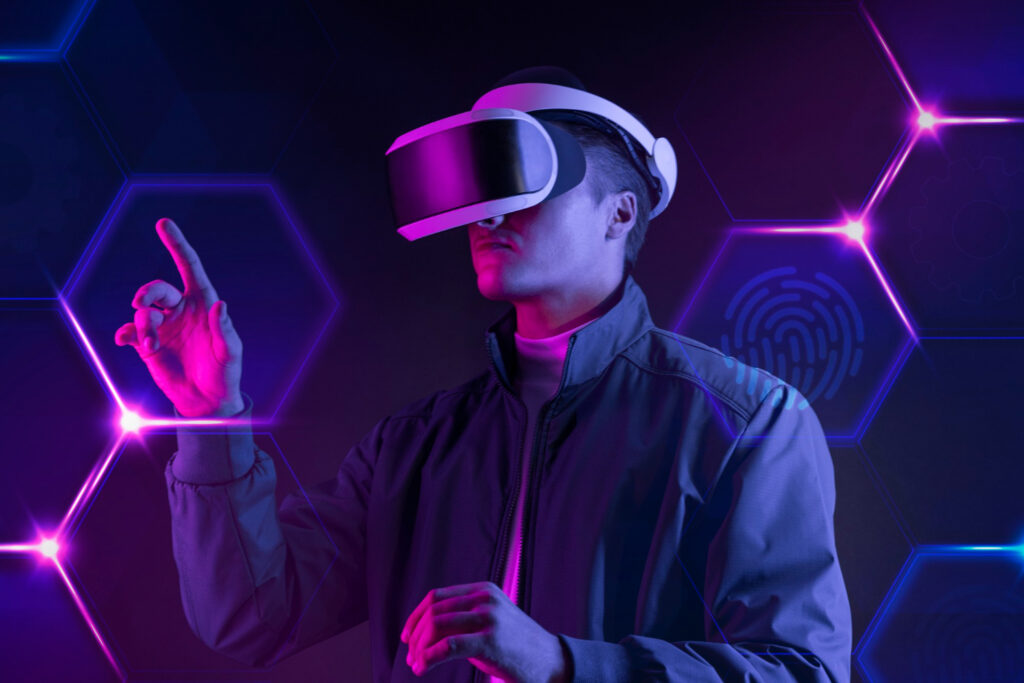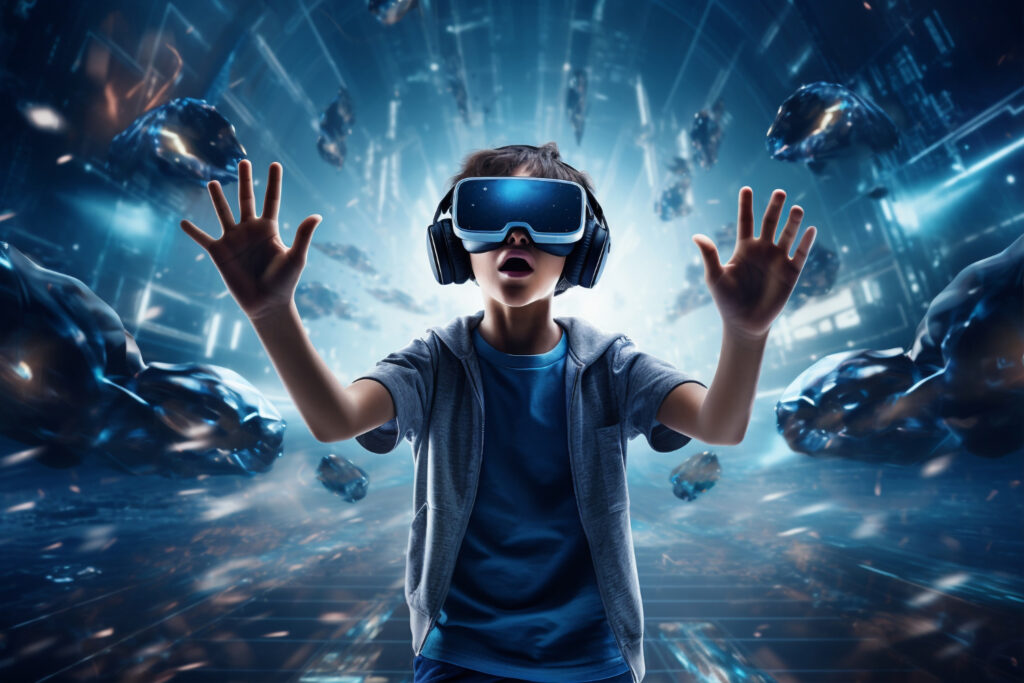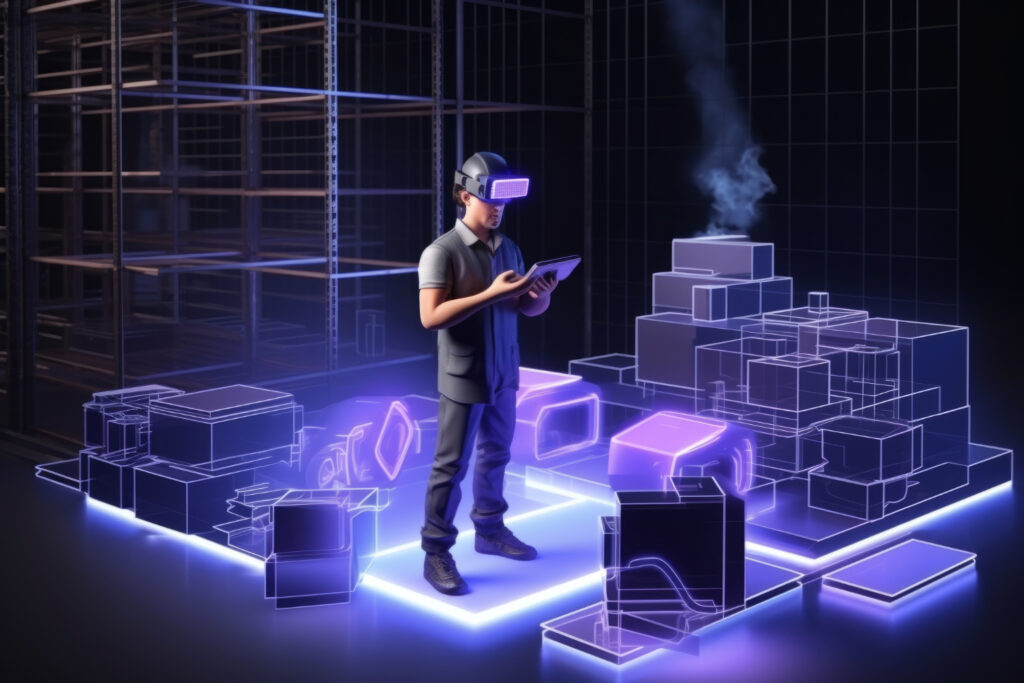
Introduction to Metaverse
Imagine a world where the boundaries between physical and digital realities blur, creating an immersive experience that transcends traditional interactions. This is the promise of the metaverse, a concept that is rapidly transforming our understanding of virtual spaces and their potential. As we stand on the cusp of this digital revolution, the metaverse is set to redefine how we socialize, work, and play, offering a glimpse into a future where the virtual and real worlds seamlessly coexist.
The metaverse is not just a buzzword; it represents a significant shift in technology and digital interaction. It encompasses a vast, interconnected network of virtual environments where users can engage in a wide range of activities, from gaming and socializing to conducting business and education. This article explores the latest breakthroughs in the metaverse and delves into what the future holds for this dynamic digital landscape.
Section 1: Understanding the Metaverse
Definition and Scope
The metaverse is a collaborative virtual participated space, created by the confluence of nearly enhanced physical reality and physically patient virtual spaces. Unlike traditional digital platforms, the metaverse is characterized by its patient nature, meaning that it continues to live and evolve indeed when druggies aren’t laboriously engaged.
Historical Context
The term “metaverse” was first introduced by author Neal Stephenson in his 1992 science fiction novel “Snow Crash.” In the book, Stephenson describes a virtual reality-based successor to the internet, where users interact with each other and software agents in a three-dimensional space using avatars. This concept has since evolved and has been influenced by advancements in VR, AR, and other technologies.
In the early 2000s, virtual worlds like Second Life began to popularize the idea of immersive digital environments where users could create and interact. However, it wasn’t until the past decade, with significant technological advancements and increased interest from major tech companies, that the metaverse concept started to gain substantial traction.
Current State
Today, the metaverse is a rapidly evolving landscape with several major platforms leading the way. Facebook, now Meta, has invested heavily in the development of Horizon Worlds, a platform that allows users to create and explore virtual spaces. Similarly, platforms like Roblox and Epic Games’ Fortnite have expanded beyond gaming, offering immersive social experiences and virtual events.
These platforms are not just games or social networks; they are becoming virtual ecosystems with their own economies, social structures, and cultural phenomena. For instance, virtual concerts in Fortnite and user-generated content in Roblox are redefining entertainment and creativity in the digital age.

Section 2: Recent Breakthroughs in the Metaverse
Technological Advances
Recent technological advancements have significantly enhanced the metaverse experience. High-resolution displays, improved motion tracking, and haptic feedback devices are making virtual interactions more realistic than ever before. Virtual reality headsets like the Oculus Quest 2 offer immersive experiences with minimal hardware, while AR technologies are bringing digital elements into the physical world seamlessly.

Artificial intelligence (AI) plays a crucial role in creating responsive and intelligent virtual environments. AI-driven avatars can interact with users in a lifelike manner, and machine learning algorithms help generate realistic virtual landscapes. Additionally, advancements in cloud computing and edge computing are enabling more complex and dynamic virtual worlds, accessible to a broader audience.
Platform Enhancements
Major metaverse platforms have seen significant upgrades and enhancements. Meta’s Horizon Worlds has introduced advanced social features, such as customizable avatars and interactive environments, allowing users to build intricate virtual worlds. These tools empower creators to design experiences ranging from simple social hangouts to complex interactive games.
Roblox, known for its user-generated content, has expanded its platform with new interactive experiences and monetization options for creators. Users can now create and sell virtual items, enhancing the economic dimension of the metaverse. Similarly, Epic Games continues to evolve Fortnite, incorporating virtual events like concerts and movie screenings, further blurring the line between gaming and social interaction.
Integration with other Technologies
The metaverse is increasingly integrating with other cutting-edge technologies, such as blockchain. Blockchain technology enables secure and decentralized virtual economies, where users can buy, sell, and trade digital assets. Non-fungible tokens (NFTs) are becoming a cornerstone of digital ownership within the metaverse, allowing users to own unique virtual items and real estate.
For instance, platforms like Decentraland and The Sandbox use blockchain to create virtual worlds where users can purchase land and build experiences. These digital assets can be traded on various marketplaces, creating a new dimension of economic activity. Moreover, blockchain ensures transparency and security, addressing some of the trust issues in virtual transactions.
Section 3: Impact of Metaverse Breakthroughs

Entertainment and Gaming
The entertainment and gaming industries are at the forefront of the metaverse revolution. Games like Fortnite and Minecraft are no longer just games; they have become social platforms where players can attend virtual concerts, explore vast worlds, and create content. These experiences are transforming how we consume and interact with entertainment.
Virtual concerts in Fortnite, featuring artists like Travis Scott and Ariana Grande, have attracted millions of viewers, offering an immersive and interactive experience that traditional concerts cannot match. Similarly, Minecraft’s virtual worlds allow players to create and share their adventures, fostering a sense of community and creativity.
Social Interactions
The metaverse is reshaping social interactions by providing immersive environments where people can meet, collaborate, and socialize regardless of physical distance. Virtual reality chat rooms and social spaces are becoming popular, offering new ways to connect with others.
Platforms like VRChat and AltspaceVR enable users to create and join virtual communities, participate in events, and engage in activities together. These platforms are not just for socializing; they also offer opportunities for education, therapy, and support groups, making virtual interactions more meaningful and diverse.
Business and Commerce
The business world is also experiencing a shift due to the metaverse. Virtual storefronts, real estate, and offices are emerging, allowing companies to operate and interact in virtual spaces. E-commerce within the metaverse is growing, with brands setting up virtual shops to sell digital and physical goods.
For example, virtual real estate is becoming a valuable asset, with companies purchasing land in virtual worlds like Decentraland to build virtual offices and stores. Virtual showrooms and product launches are becoming common, providing immersive and interactive experiences for customers. Additionally, virtual collaboration tools are enabling remote teams to work together more effectively, transcending geographical boundaries.
Section 4: Challenges and Considerations
Technical Challenges
Despite significant advancements, technical challenges remain. High-quality VR experiences require substantial computing power and bandwidth, which can be a barrier to widespread adoption. Ensuring interoperability between different metaverse platforms is also an ongoing challenge, as seamless transitions between virtual worlds are crucial for user experience.
Moreover, developing realistic and immersive virtual environments demands significant resources and expertise. Creating detailed 3D models, lifelike animations, and responsive AI-driven interactions requires a combination of artistic talent and technical proficiency. As the metaverse continues to evolve, addressing these technical challenges will be essential to achieving its full potential.
Ethical and Privacy Concerns
The metaverse raises several ethical and privacy concerns. As users spend more time in virtual environments, issues related to data security, surveillance, and digital rights become increasingly important. The collection and use of personal data within the metaverse must be carefully managed to protect user privacy and prevent misuse.
Additionally, the immersive nature of the metaverse can amplify issues such as cyberbullying, harassment, and addiction. Establishing clear guidelines and regulations to address these concerns is crucial for creating a safe and inclusive virtual environment. Ethical considerations around digital ownership, intellectual property, and content moderation also need to be addressed to ensure a fair and equitable metaverse.
Regulatory Landscape
The regulatory landscape for the metaverse is still evolving. Governments and regulatory bodies are beginning to address issues related to virtual economies, digital ownership, and user protection. Future regulations will play a significant role in shaping the metaverse, ensuring that it develops in a manner that is both innovative and responsible.
For instance, regulators are exploring how existing laws related to data protection, consumer rights, and financial transactions apply to virtual environments. New regulations may be needed to address unique aspects of the metaverse, such as the use of NFTs, virtual real estate transactions, and digital currencies. A balanced approach to regulation will be essential to foster innovation while protecting users and maintaining trust.
Section 5: Future Prospects of the Metaverse

Emerging Trends
Several emerging trends are set to shape the future of the metaverse. The use of AI to create adaptive and responsive virtual environments is becoming more prevalent. AI-driven avatars, virtual assistants, and intelligent NPCs (non-player characters) can enhance user interactions and make virtual worlds more dynamic.
Advancements in cloud computing and edge computing are also playing a critical role in the metaverse’s future. These technologies enable more complex and data-intensive applications, providing users with high-quality experiences regardless of their device capabilities. As cloud infrastructure improves, the metaverse will become more accessible and scalable.
Innovative Applications
Beyond gaming and social interactions, the metaverse holds potential for innovative applications in various industries. Virtual classrooms are emerging as powerful tools for education, offering immersive and interactive learning experiences. Students can explore historical sites, conduct virtual experiments, and collaborate in real time, making learning more engaging and effective.
In healthcare, the metaverse is opening new avenues for telemedicine and therapy. Virtual consultations, medical training simulations, and support groups are becoming more common, providing patients and healthcare professionals with flexible and efficient solutions. The metaverse can also facilitate remote rehabilitation and mental health support, making healthcare more accessible.
Expert Predictions
Industry experts predict that the metaverse will become an integral part of our digital lives, much like the internet today. As technology continues to evolve, the metaverse will offer increasingly sophisticated and immersive experiences, ultimately changing how we live, work, and play.
Experts foresee a future where the metaverse


